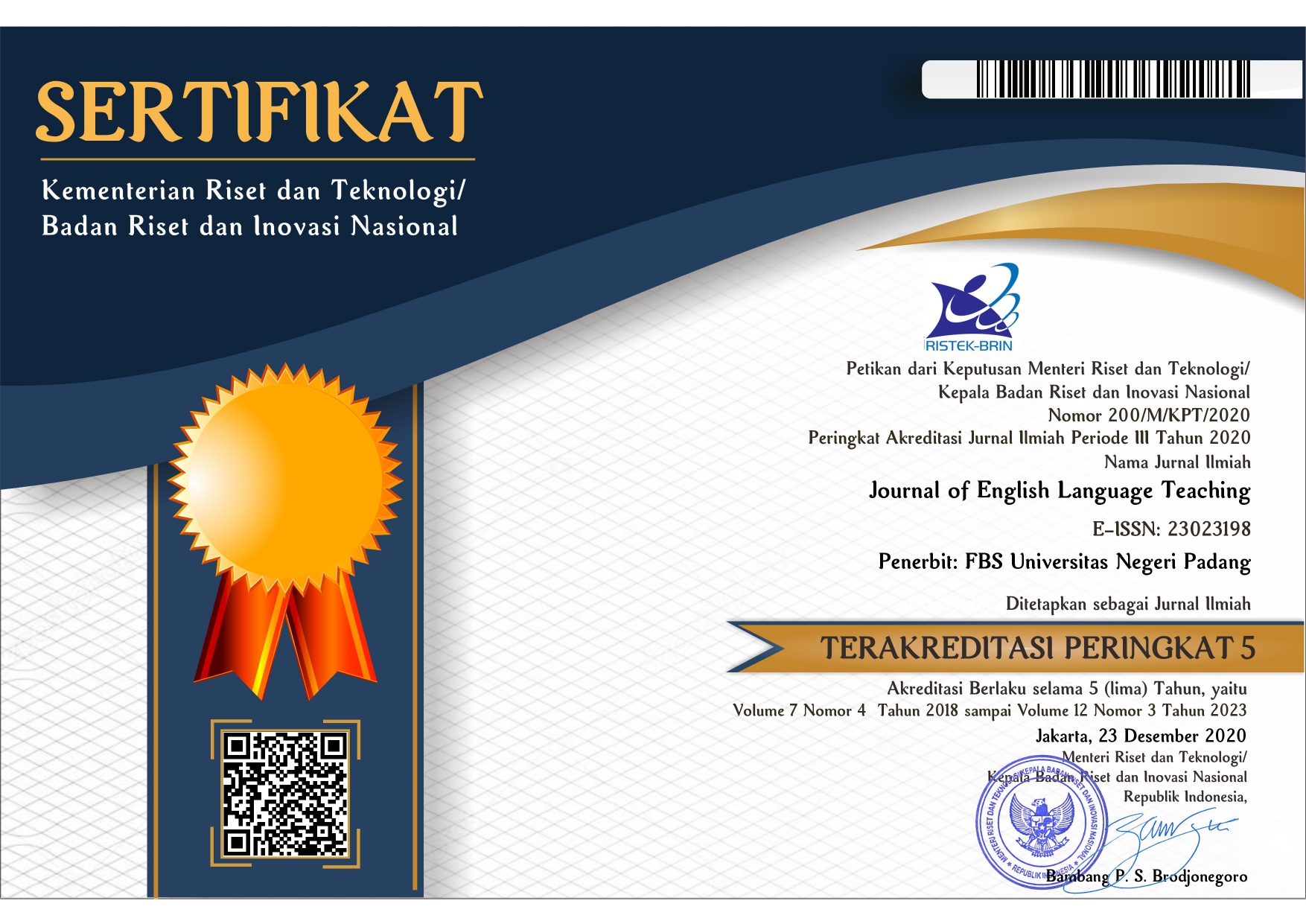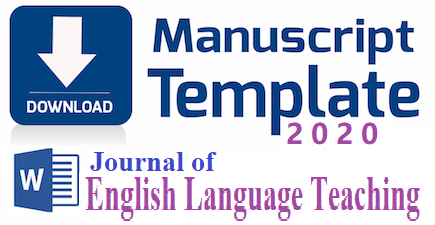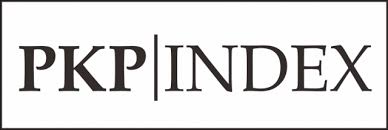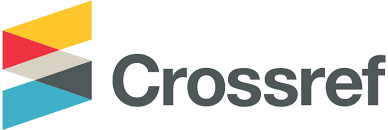An Analysis of Gender-Based Strategies for Teaching Speaking in Senior High School in Medan
 ), Salam Mairi(2),
), Salam Mairi(2), (1) Universitas Negeri Padang
(2) Universitas Negeri Padang
 Corresponding Author
Corresponding Author
Copyright (c) 2025 Nurul Ismah Alya
DOI : https://doi.org/10.24036/jelt.v14i1.133295
Full Text:
 Language : en
Language : en
Abstract
Speaking is one of the essential skills in learning English. However, teaching speaking presents different challenges depending on the gender composition of the class. This study aims to analyze the strategies used by teachers in teaching speaking to male-only and female-only classes in a senior high school in Medan. Using a qualitative approach, data were collected through classroom observations and interviews with English teachers.
The findings reveal that teachers apply different strategies to engage male and female students effectively. In male-only classes, teachers use interactive and competitive activities such as debates, role-plays, and video-making projects to maintain student interest and participation. In contrast, female-only classes benefit from structured learning, collaborative discussions, and group presentations, as female students tend to be more cooperative and receptive to grammar accuracy. The study also highlights the role of motivation, instructional media, and classroom management in overcoming students’ difficulties in speaking English.
This research suggests that an adaptive teaching approach is necessary to address the distinct learning needs of male and female students. The findings can serve as a reference for teachers to develop more effective speaking strategies that enhance students’ communication skills in English.
Keywords
References
Angwaomaodoko, E. (2023). Influence Of Gender On Career Choice And Academic Performance. International Journal Of Education, Learning And Development, 11(5), 1–14. Https://Doi.Org/10.37745/Ijeld.2013/Vol11n5114
Borbasi, S., & Jackson, D. (2008). Navigating The Maze Of Nursing Research: An Interactive Learning Adventure. Elsevier Health Sciences Apac. Https://Books.Google.Com.Sa/Books?Id=Kaq2pn3v2yuc
Creswell, John W., & Creswell, J. D. (2018). Research Design. In Research Defign: Qualitative, Quantitative, And Mixed M Ethods Approaches.
Creswell, J. W. (N.D.). Qualitative Inquiry & Research Design (Third Edit, Issue 112).
Finlay, L. (2021). Thematic Analysis: The “Good”, The “Bad” And The “Ugly.” European Journal For Qualitative Research In Psychotherapy, 11, 103–116. Https://Ejqrp.Org/Index.Php/Ejqrp/Article/Download/136/93
Munhall, K. G. (2000). Functional Imaging During Speech Production. Acta Psychologica, 107(1–3), 96–117. Https://Doi.Org/10.1016/S0001-6918(01)00026-9
Mutialona, I. Gus. (2021). The Gender Comparison On Speaking Ability At The Tenth Grade Of Senior High School 1 Ujungbatu. I–36.
Inggris, 5(2), 130–153. Https://Doi.Org/10.26618/Ejpbi.V5i2.844
Richards, J. C., & Farajnezhad, Z. (2022). Methodology In Language Teaching An Anthology Of Current Practice Jack C. Richards & Willy A. Renandya. Research Gate, May, 1–29. Https://Doi.Org/10.13140/Rg.2.2.36344.72962
Sax, L. (2021). Why Gender Matters. Women & Politics, 17(1), 2–9. Https://Doi.Org/10.1300/J014v17n01_02
Smith, M. W., & Wilhelm, J. D. (2002). “Reading Don’t Fix No Chevys”: Literacy In The Lives Of Young Men. Eric.
Tatarinceva, A. (2016). Influence Of The Gender Factor On A Student’s Learning Style And Achievements In Language Learning. 64–71.
The Education Alliance. (2007). Gender Differences In Reading Achievement: Policy Implications And Best Practices. Education Alliance.
Ur, P. (1996). A Course In Language Teaching. In Iosr Journal Of Humanities And Social Science (Vol. 19, Issue 6, Pp. 1–376). Https://Doi.Org/10.9790/0837-19664456
Viriya, C., & Sapsirin, S. (2014). Gender Differences In Language Learning Style And Language Learning Strategies. Indonesian Journal Of Applied Linguistics, 3(2), 77–88. Https://Doi.Org/10.17509/Ijal.V3i2.270
Zafar, S., & Meenakshi, K. (2012). Individual Learner Differences And Second Language Acquisition: A Review. Journal Of Language Teaching And Research, 3(4), 640–646. Https://Doi.Org/10.4304/Jltr.3.4.639-646
 Article Metrics
Article Metrics
 Abstract Views : 35 times
Abstract Views : 35 times
 PDF Downloaded : 3 times
PDF Downloaded : 3 times
Refbacks
- There are currently no refbacks.
Copyright (c) 2025 Nurul Ismah Alya

This work is licensed under a Creative Commons Attribution-NonCommercial 4.0 International License.
















